There are no Costa Rican Holidays in February but...
The first edition was issued in September 2009 plus several extra editions in the early years brings us to 150 in February 2021.
Happy Anniversary GGC!
|
Broken News
(All the News That's Fit to Reprint)
San Lucas Prison Island to be 30th National Park
In its latest move to preserve national historic sites that are accessible to the public, the government recently announced San Lucas Island, the notorious Devil`s island of Costa Rica, will become the country`s 30th national park. This is a place where some of the country`s most notorious criminals were housed in past years in a hellhole on an island in the middle of Nicoya Bay.
It also is the place that produced the most prolific Costa Rican writer of all time. To read the story of San Lucas and the writer go HERE.
Costa Rica Ranked #1 for Retirement
International Living Magazine does an in-depth analysis of key factors important to retirees in selecting a country for retirement. The magazine`s Annual Global Retirement Index for 2021 recently published put our Ticoland at the top of the list of the top 25 countries that resulted from their analysis. That`s #1 out of the approximately 195 countries worldwide.
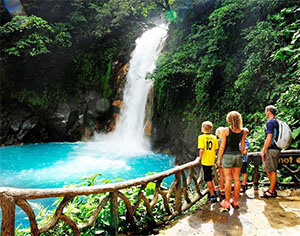 |
| Costa Rica and Its Natural Beauty |
This is the 42nd year International Living has done this index. Bragging on their own website, IL stated: “The Retirement Index is the most comprehensive and in-depth survey of its kind. It’s the best way we know of to sift through the wealth of opportunity the world offers, bring some order, and help you pinpoint the best destination for you.” The index takes into account key factors such as climate, the proximity of nature, the hospitality of the people, social and political stability and access to, and quality of, health care.
Personally this writer, who has lived here in retirement for 12 years to date and is now a citizen, couldn`t be happier. I think International Living is right on the money.
Costa Rica #1 In Cell Phones
 When a country is small like Costa Rica, both in population (5.0 million =.065% of the world) and land area (51,100 square kilometers or .043% of the world) you don`t often see statistics showing said country is on top of the list, any list. But Costa Rica has done just that, twice this month if you add this other ranking to the retiree ranking above. The international Telecommunications Union (ITU) recently published a report citing Costa Rica as being number one in the world for having the highest number of active cell lines per inhabitant.
When a country is small like Costa Rica, both in population (5.0 million =.065% of the world) and land area (51,100 square kilometers or .043% of the world) you don`t often see statistics showing said country is on top of the list, any list. But Costa Rica has done just that, twice this month if you add this other ranking to the retiree ranking above. The international Telecommunications Union (ITU) recently published a report citing Costa Rica as being number one in the world for having the highest number of active cell lines per inhabitant.
The number of active prepaid and postpaid lines in the country came in at 169% of the population 8,450,000 active cell lines for 5,000,000 people. The next nearest in such intensity include business giants such as Singapore (146%), Finland (132%), and Switzerland (130%). In Latin America Costa Rica outpaced Uruguay(150%) and El Salvador (147%). The big cell phone providers here are Kolbi (the state run telecom company) with a 51.2% market share followed by Movistar with 29.9% and Claro with 18.9%.
Personally, I can guarantee that if you engage a Tico in a conversation for over five minutes its highly likely he or she will pull out their other cell phone and start a separate conversation with somebody else.
"Halo, ¿que es?. Oh amigo, pura vida!!!"
Increase in UFO Sightings in Costa Rica
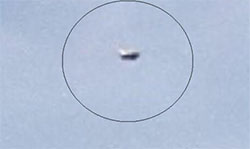 |
| OVNI Sighted Near Volcan Irizú |
Both the U.S. and Costa Rica have noted an increase in Unidentified Flying Objects during the Covid Year just ended. UFOs here are called OVNIs or Objetos Voladores No Identificados.
An online newsletter reported that in the U.S., the National UFO Reporting Center (NUFORC) recorded a 51% increase in sightings in 2020 (U.S.), compared to the same period in 2019. There is no formal organization that keeps track of sightings in Costa Rica but there are a couple of Facebook watch groups that claim there has also been a dramatic increase in sightings this past year in Costa Rica.
To see a recent example of an OVNI in Coast Rica, check this one out that recently hovered near Volcan Irazú: Luminous UFO over Irazú volcano. The object hovered for 10 minutes than later shot off at what was estimated (if you have a video recorder, the recording can later be processed and the speed approximated) to be greater than 1km/sec). That`s 3,600 km/hr or greater than 2,000 mi/hour. The acceleration rate is a marvel also. In the image above the OVNI looks to me like the space shuttle returning but in the video linked above it looks more like a saucer and the exit acceleration is most impressive.
I have two questions: 1) Is the increase in interest COVID-related or coincidental and they know something we don`t and 2) I wonder if they deliver pizza?
¡Pura Vida!
Economic Drumbeat
(Costa Rica Business Happenings)
IMF Negotiations Result In Loan Approval
 In October of 2020 the government announced that it had reached preliminary agreement with the International Monetary Fund to obtain a loan of $1.7B to offset government shortfalls in its current budget. Part of that agreement included the imposition of new taxes on telecommunication transactions and other fees.
In October of 2020 the government announced that it had reached preliminary agreement with the International Monetary Fund to obtain a loan of $1.7B to offset government shortfalls in its current budget. Part of that agreement included the imposition of new taxes on telecommunication transactions and other fees.
Shortly thereafter as many as a hundred protests and traffic blockages broke out in opposition of the new taxes that would be imposed to fund repayment of the new loan. It took better than a month for the government to regain control of its highways.
This month President Alvarado stated that he and his team would continue to pursue IMF help and that they plan to sit down with the IMF to negotiate terms beginning January 11, 2021. More to be revealed. Later in the month the government announced that they had reached agreement for the second time and that the loan of $1.75 billion will be parceled out in four increments over four years. The new agreement does not require the government to impose new VAT or transactional taxes as the earlier one did (yeah, it just flows directly to national debt).
Future Airport Up in the Air Again
Back in 2017 (sounds pre-historic now doesn`t it) when virtually all things were trending upward (business, air travelers, exports) the government was doing what it does best, planning for expansion of infrastructure. On its major project list was a large new airport to be sited near the town of Orotina in the northwestern part of the country and in a location about 50 km west of the currently biggest airport Juan Santamaria. My how things have changed because of Covid.
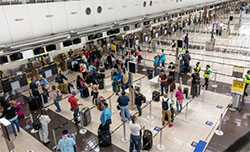 |
| Juan Santamaria Check In |
The Minister of MOPT (Ministerio de Obres Publico y Transportes or Minister of Public Works and Transports), announced recently that the new airport will be delayed because of the effect Covid has had on revenue and long term project thinking. We have to remember that Juan Santamaria Airport, currently the largest in the country, stopped operations completely for nearly five months ending in August 2020 and it was near the end of the year before flight operations approached previous performance.
Not only did the shutdown result in lower tax income for the government but it also was a drastic drop in revenue for the airport operator, Aeris Holding who, as part of their contract with the government is owed financial compensation for the months in which its income fell by more than 70%. So the emphasis will be on making Juan Santamaria airport as efficient as possible and restructuring the capital plan to support that. The idea of the Orotina airport will be delayed accordingly. Quoteth the MOPT Minister: “We Have To Forget About The Airport In Orotina For A Few Years”
Job Performance Increasing
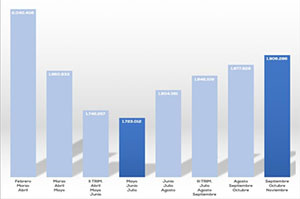 It`s not all bad news; job recovery is improving. The graph (left) shows total employment by quarter (not calendar quarter, just three month segments beginning in February 2020) and the base line for February to April was 2,040,206. The Covid Pandemic hit Costa Rica beginning in March and after the following two quarters the employment total had dropped to 1,730,012, a decline of over 15%; as the unemployment rate hit an all time high of 24.4%.
It`s not all bad news; job recovery is improving. The graph (left) shows total employment by quarter (not calendar quarter, just three month segments beginning in February 2020) and the base line for February to April was 2,040,206. The Covid Pandemic hit Costa Rica beginning in March and after the following two quarters the employment total had dropped to 1,730,012, a decline of over 15%; as the unemployment rate hit an all time high of 24.4%.
In this latest quarter (September - November) the total employment had risen to 1,913,286, a gain of 183,274 jobs or just under 11% from the 2020 low.
We`re not home amigos but if we keep pulling we`ll get there.
¡Pura Vida!
Latin America Updates
(Major Events In Neighboring Countries)
Argentina
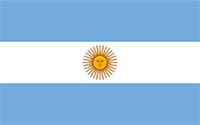
 Chinese pirate ships are more and more prevalent in Argentine and other Latin American waters. We`re talking about fishing pirates and virtually every country with a Pacific coastline is a target as well as Atlantic Coast countries. It is estimated there are 17,000 (!) Chinese fishing ships plying the waters of the globe in search of species favored by the Chinese population.
Chinese pirate ships are more and more prevalent in Argentine and other Latin American waters. We`re talking about fishing pirates and virtually every country with a Pacific coastline is a target as well as Atlantic Coast countries. It is estimated there are 17,000 (!) Chinese fishing ships plying the waters of the globe in search of species favored by the Chinese population.
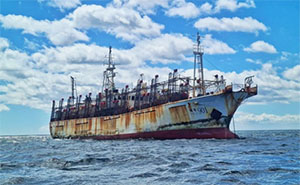 |
| A Chinese Trawler Near Argentina |
These ships cruise just outside the 200 mile international Exclusive Economic Zone (EEZ) that has been set up by International agreement. They then make forays into the zones to capture their prey, particularly Chinese delicacies like shark fins. These ships, like all ships, are equipped with devices that identify themselves but these monitoring devices can be turned off, and often are silenced. There are many reports of groups of ships "disappearing" for periods of time as they make a run into the EEZ`s.
In Argentina the laws are reportedly weak on this affront. They call this kind of activity an "infraction" rather than a crime and their policy is not to confront the poachers with their navy. Reportedly there is yet another 300 ship fleet coasting just out of the EEZ of Peru near the Galapagos Islands.
Definitely more to be revealed on this story.
Cuba
 Currency problems have been the norm in Cuba ever since the U.S. and other countries cut off relations with the Communist regime after the revolution in the late 1950`s. Immediately after that action the new Cuban government (then under Che Guevarra) created the Cuban Peso (which goes by the acronym CUC) but it always had difficulty getting the currency established in international circles.
Currency problems have been the norm in Cuba ever since the U.S. and other countries cut off relations with the Communist regime after the revolution in the late 1950`s. Immediately after that action the new Cuban government (then under Che Guevarra) created the Cuban Peso (which goes by the acronym CUC) but it always had difficulty getting the currency established in international circles.
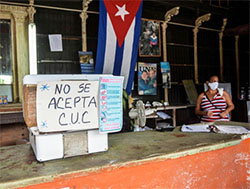 |
| This Store Beat the MId-Year Deadline |
Eventually they created the CUP, a convertible peso that was pegged at 1 CUP/1 USD to encourage international trade. In recent times however, a street trade of 24-25 CUP to 1 CUC was more typical. Over time many people came to be paid in CUPs rather than the CUCs.
In 1993 the Cuban government, because of and after the demise of the Soviet Union elected to have two currencies as countries can do if they wish. In this case the Cuban government elected to have both the CUP and the USD.
That system was put under strain by further imposed trade restrictions. As one way to overcome this, the government recently set up "Dollar Stores" where goods could be purchased with foreign credit cards in major foreign currencies, the US$ or Euro, for example. Many Cuban families have U.S. relatives that provide these cards to their Cuban counterparts. That`s what the CUC was designed to do but didn`t.
Recently the Cuban Government announced they will simplify their monetary system (gracias a dios) to a CUP only system with a buy/sell conversion rate of 24 / 25 CUC`s to one CUP. They plan to phase out the CUC by mid-2021.
Is everything clear to you now? Then would you kindly explain it to me?
Nicaragua

Regularly scheduled flights to Nicaragua have dropped to one airline (Avianca) while the government continues to control information regarding the number of Covid cases caused by the disease in Nicaragua. Even Coviasa, the National Airline of Venezuela was forced to cut their one flight to Nicaragua because it stopped in Havana and the Cuban government asked that it be cancelled.
There are a few private organizations such as the Multi-disciplinary Scientific Committee and the Nicaraguan Foundation for Economic and Social Development that place Covid-19 deaths in their country in the neighborhood of 8,500. The government, who has "centralized the acquisition, processing and results of the Covid-19 tests" and which remains in control of all Covid info from test results to death statistics to press releases admits only 163 deaths.
More drama to be revealed on this I`m sure.
Panama
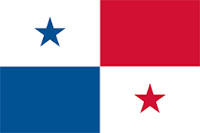
At nearly the same time the four-year Costa Rican credit line was approved by the IMF, the board of governors also approved a $2.7 billion "Precautionary and Liquidity" line of credit (PLL) to offset the strain caused by the Covid virus on that Country`s economy. That amount can be drawn over two years.
What a difference a Canal (Income) makes.
¡Solo Bueno!
(Rumble and Weather Talk)
(Shaky Happenings and Weather Observations On or About the Pacific Rim)
Rumble - Nothing to Report
January was another month of virtually no significant tremors not only in Costa Rica but all over Central America and most of South America as well. The strongest terremoto registered in Latin America was a 6.4R near the town of Pocito in far western Argentina.
Rainfall - La Nina
In early January the Costa Rican weather service issued an advisory that we might expect a few weeks of the continuation of La Nina. They were right on the money. For most of the month we`ve enjoyed brief rains at different times of the day followed by summer sun. The nights have been cool (when we say "cool" here we`re talk mid to high 60`s F) resulting in good sleeping weather and minimizing the need for air conditioning even in the daytime. GG could handle this type of weather all year long.
¡Pura Vida!
Check Out Recent Earthquakes Around the World Posted by the U.S. Geodetic Survey: Recent Quakes |
Search the Golden Gringo Chronicles Archives for Topics That Interest You
You can use our Archives to search for anything that has been written in more than 260 feature articles of the Golden Gringo Chronicles plus find Broken News items and ROMEO restaurant reviews. Enter your topic or item to search in the Google Search Routine below and follow the links offered from the search results. Suggestion: Enter only a simple, precise and unique as possible keyword or
two in order to narrow the number of references retrieved:
Golden Gringo Chronicles - Enter Search Here
Readers: Our publication is open to suggestions regarding future articles and will accept pieces written by others but we reserve the right to decline anything that the editorial staff (that's GG) thinks is inappropriate for this format. Send proposals, comments, suggestions, ideas, meaningless statements and jocular observations concerning the Chronicles to GG here: gg@goldengringo.com.
Feature #1

(Hah, Hah, Hah, Is the Golden Gringo Going Batty?)
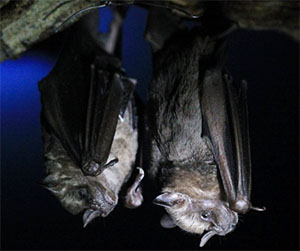 |
| "Sun`s Going Down Ralph, Have a Good Night" |
So there was GG sitting in my comfy, over-stuffed chair in the living room (which is also my bedroom - which is also my computer room), watching something not too meaningful on the Telly, (learned that word from my British friends), when out of the corner of my eye I perceived something black and shiny creeping across the floor along the wall on the other side of the room (Sr. Mary Agnes would not at all be happy with the length of that sentence). Naw, it couldn`t be...but it sure as hell did look like a bat, not flying mind you but walking or trying to.
On further consideration I determined that it was indeed a bat. It was walking (more like scratching) its way along the floor in the seam created by the wall meeting the floor. My new friend catches my eye at the same time I catch his. He accelerates and after about three or four feet he reaches what he thinks is security by hiding behind a carton stuffed with miscellany that I still have not found a home for.
Now wait a minute, I've experienced creepy crawlers, iguanas, ants (the latter, somewhat offset by a pet gecko whom I loved and who I wanted living with me because of his appetite for ants). All of those I`ve experienced and lived with in Costa Rica. But I`ve never been invaded by an airborne flying mouse with a nasty set of teeth, Such is the way it is living on the edge of the jungle. But this creepy dude should have known; I will fight back.
I scurried for a broom. That was the way I got rid of the Iguana when he came to visit me a couple of years ago. In that instance I had returned from a shopping foray and the minute I snapped the lock on the door from the balcony outside I heard something loudly scurrying across the kitchen floor. When I entered the room I got a good view of a pre-historic creature in the opposite corner of the kitchen panting and moving about. My first thought was: "how in the hell did he ever get into my kitchen, we`re on the second floor!" My train of thought (often just a miniature model of a train I must admit), quickly shifted to how the hell do I get him out of my kitchen. I knew that Iguanas have teeth, and I suspected they could give one a good bite if scared or irritated or if I attempted capture.
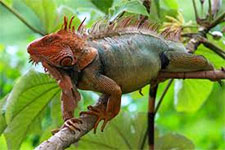 |
The Iguana was, though, rather pretty. He was all green with a couple of patches of dark red, similar to but not exactly like the photo right. I immediately named my new friend "Iggy" the Iguana. I wasn`t quick enough of brain or foot to find my camera and immortalize him/her/it but he/she/it (could have been a "she" or "it" for all I know about Iguanas) will have to go un-memorialized in the history of the Golden Gringo. He/she/it looked to be about two to two and a half feet in total length including his tail. Not huge, I admit, but still a bit intimidating.
Then it dawned on me; the Iguana must have come in through the jalousie window, that`s it. But how and why. How? He climbed in over the lower open slat of the jalousie but why? He`s probably hungry and smelled some goodies lying about my kitchen. And in good Costa Rican style there is no screen on that window.
I have a small jalousie window in my kitchen, which is part of a larger window and which was open that day while I was gone. Still, he was quite an acrobat as the lowest opening in that window is about a foot above and on the opposite end of a roof that enjoins the building near the window, about a 30 foot span. And how the heck did he ever get up to the first floor roof anyway? Oh yeah, there is a tree that runs about ten feet higher than the roof but vertically very close to the roof on the opposite end; he must of used that to get up to the roof. A determined lizard for sure, perhaps driven by hunger.
After I regained my senses, I grabbed a broom and began swishing and chasing my new lizard friend towards the exit door. He was a quick devil and It took about five minutes as every time I swished he ran for another corner. I was finally successful when I swished him out the front door. But he kept swishing, moving too quickly for his own footing on the slick tile surface and launched himself off the balcony into the first floor sidewalk. "Owe" says GG. Then he disappeared and I haven`t seen him since.
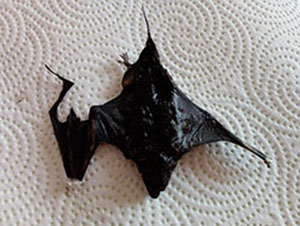 |
| My Deceased Friend, Manny The Murciélago |
So, we were talking about bats, were we not? I went after my most recent unwelcome visitor with the same broom I had used on Iggy. I made no pretense of sweeping him to one direction or another like I did with the Iguana because I figured he`d quickly take to flight and then perch someplace where I couldn`t find him. Later, in the middle of the night he would re-emerge and encounter me, Boris Karloff style. So I simply whacked him twice, to stun him enough so he stopped moving, then I administered three quick and hard whacks as the coup de grace. To be sure I would be ostracized in some circles for this brutality but the fear caused by a flying rodent with sharp teeth was gone. GG - 1, Murciélagos - 0.
With the final set of whacks Manny (my pet name for the new intruder) gave up the bat ghost and became historical. I took a post-mortem photo of him (above) complete with a set of tiny punctures caused by the plastic straws of the broom.
It wasn`t three seconds after I pronounced Manny deceased that I began feeling a little guilty. Couldn`t there have been a way to get him out of my apartment without whacking him? Perhaps one of our readers could suggest one? Not being a student of the jungle I couldn't even name what kind of bat it was; notice how in the post mortem environment we change the moniker from he/she/it to "it".
Then I got on the internet to find more info on bats, particularly Tico bats.
I learned that there are 1,100 species of bats in the world and Costa Rica has about 110 of them (i.e.,estimates of bat species in Costa Rica vary from 105 to 120). There you go again Costa Rica, garnering fully 10% of all the species of an animal in the world with only =.035% of the world`s land. The articles I read reinforced some things I already knew, namely that the favorite diet of bats is insects. Most knowledgeable people credit them with being a very important and positive part of the ecological balance. There are some large bat caves around the world, like in Indonesia where several million flying rodents are housed in one bat cave and can consume as much as each bird`s weight in insects in one night. Good little bats.
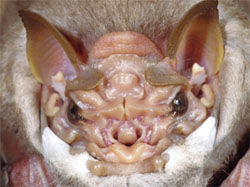 |
| Centurio Senex: "The 100 Year Old Bat" |
I was in the midst of recounting this story when I received an article from a friend and sometime contributing writer to the Chronicles, Señora Carol Vaughn. In the article Carol talks about one Dr. Rodriguez, a biologist from the University of Costa Rica who recently found a bat cluster deep in the Costa Rican rainforest that consisted of several dozen of a heretofore rare species called the Centurio Senex. The name for this particular species is Latin for "100 Year Old Man", photo right - you decide. This particular bat has also ranked high on the list published by the "Ugly Animal Preservation Society". I wonder why.
Stay in the rainforest amigo and out of my kitchen.
...and folks, hold the quips about the resemblance of Centurio Senex to GG.
¡Solo Bueno!
¿Que es Eso? Department (¿What is That?)
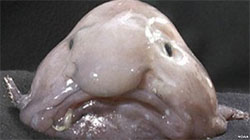 Looks like someone took a lump of clay
Looks like someone took a lump of clay
and carved a face into it.
It couldn`t be alive... could it?
I`m pretty sure it`s not a bat, so what is it?
Answer in
What's-in-a-Word
section below.
¡Pura Vida!
How Peru Got Its Name
(It Wasn`t Easy)
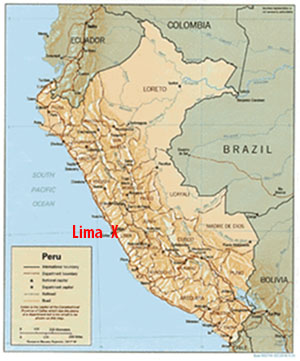 |
| Map of Peru |
To refresh the memory of where and what Peru is see the map to the right. It is a country on the Pacific side of South America with a current population of 32.5 million. It is bordered on the north by Ecuador and Colombia, on the East by Brazil and on the south by Bolivia and Chile. Its western border is the pacific ocean with a coastline of some 1,500 miles (2,414 km). The Cordillera Central or central mountain range runs virtually the entire length of the country and is shown in relief on that map.
Before the Incas rose to prominence in the Pre-Colombian period, the area was known as the Kingdom of Cuzco. The Incas then established what was known as the pre-Colombian Inca Empire there in 1438 and grew its riches for nearly a hundred years, until 1533 when Spanish conquistadores decided to conquer the area for its wealth of riches, including gold deposits. And then the fun began (a smart aleck way of saying bad times).
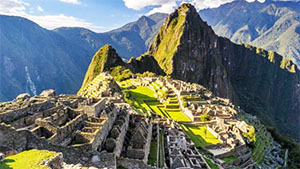 |
| Machu Picchu Today |
Peru is also the home of Machu Picchu, the walled city built on the top of a mountain about 300 miles southeast of the Capital of Lima. Machu Picchu some time ago was voted as one of the seven wonders of the modern world. This city on a hill is thought to have been built by Inca Emperor Pachacuti during his reign in 1438-1476. The town was both his palace and also contained some 150 different buildings that included residences, baths, religious/spiritual squares and the emperor`s home. Emperor Pachacuti is credited with building the Incas into an Empire which would last almost another 100 years until the Spanish succeeded in conquering both the Incas in the south and the Aztecs in the north.
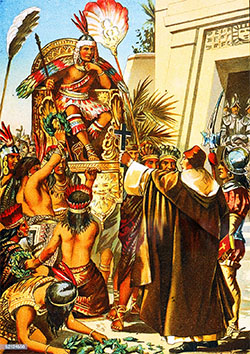 |
| Spanish Conquistador Confronting Inca King Atahualpa |
Peru is also the location of five places (Cusco – Coricancha Monastery), Sacsayhuaman, Machu Pichu, Nazca and Chaco, the latter housing the Paracas History Museum and its collection of elongated skulls. (50 golden gringo points if you can pronounce any three of those names above correctly) Ancient Astronaut Theorists (see the Ancient Aliens program on the History Channel) claim these sites, particularly Machu Picchu and Nazca, offer enough evidence of incredible architectural technology that could only have been formed by extraterrestrial technology visited on this planet in ancient times (like Las Esferas, The Mysterious Stone spheres of Costa Rica). Aside from that, the sites are incredible examples of stone work no matter how they were formed. GG hasn`t been there yet but it`s high on my bucket list.
The Spanish were unrelenting and often vicious in their conquest of the Incas. They offered no respect to the emperors of Inca lands and put the native at a distinct disadvantage because of their Spanish superior weaponry. The superior military technology of the conquistadors, who possessed horses, dogs, metal armor, swords, cannons, and primitive, but effective, firearms made battles nearly one-sided. In the battle of Pizzaro against Atahualpa for example, one of the Incan Emperors who was lured into a meeting with Pizzaro, by the name of Atahulpa, showed up with 20,000 unarmed people and Pizzaro countered them with 170 soldiers who ended up killing over 2,000 of the natives with little loss of life to the Spanish. But, getting back to the topic...
The Spanish found a great deal of silver and gold treasure in Peru. They found at least as much loot as had been brought to them for the ransom of Atahualpa, although by this time there were more conquistadors to share in the spoils. Some fabulous works of art were found, such as 12 "extraordinarily realistic" life-sized sentries made of gold and silver, a statue of a woman made of solid gold which weighed 65 pounds, and vases skillfully crafted of ceramic and gold. Unfortunately, all of these artistic treasures were melted down, recast into bars and shipped back to Spain.
Meanwhile, back to the topic...GG was wandering about the internet recently and came upon the following discourse concerning how Peru got its name. The piece was not attributed so I thought I`d offer it here to Chronicles readers as it is an interesting sidelight.
Why is Peru Called Peru?
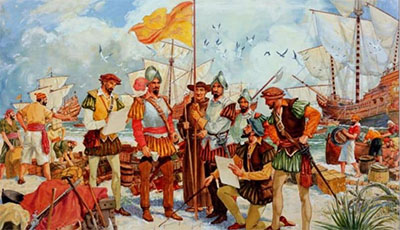 In the early 1500`s as the Old World staked its claim upon the New, a new word arrived to describe the rich lands of the Inca Empire. As the Incas struggled and ultimately failed to maintain what they personally knew as the land of Tawatinsuyu, the Spanish were talking of the Conquest of Peru.
In the early 1500`s as the Old World staked its claim upon the New, a new word arrived to describe the rich lands of the Inca Empire. As the Incas struggled and ultimately failed to maintain what they personally knew as the land of Tawatinsuyu, the Spanish were talking of the Conquest of Peru.
Contemporary records we`ve seen were inconsistent. Perú, Birú, Virú, Pirú and Berú all appeared in the early chronicles (not the GG Chronicles - Ed.) and accounts of the Conquest. Like the New World itself the word was in flux. "Peru", however, was to prove a durable name --- despite its uncertain origins.
The Etymology of Peru: Two Theories
Historians have put forward or supported various etymological theories since the Conquest. Two theories, however, have gained greater traction than the rest:
Garcilaso’s Fisherman
Garcilaso de la Vega (1539-1616) was one of the first historians to tackle the etymology of “Peru”. Garcilaso, commonly known as “El Inca,” was the son of a Spanish conquistador and an Inca noblewoman. His Comentarios Reales de los Incas, published in 1609, remains one of the most important contemporary accounts of the Incas and the Spanish Conquest.
In the first volume of his Comentarios, Garcilaso offers one of the first answers as to why Peru is called “Peru”. According to “El Inca,” a group of Spanish explorers landed on the Pacific coast somewhere south of the equator, where they encountered a native fisherman at the mouth of a river. With no interpreter at hand, the Spaniards tried to ask the fisherman his name and the name of the land on which they stood. The native replied that his name was Berú and that the name of the land on which he stood was Pelú (which, according to
Garcilaso was the local word for "river".
The Spaniards were happy to take the similarly sounding Berú and Pelú for the name of the region, and slowly morphed it into Perú. Garcilaso dates this encounter to 1515 or 1516.
Pascual de Andagoya and the Cacique Birú
In 1522, a Spanish conquistador named Pascual de Andagoya sailed east along the coast of Panama. He reached the Gulf of San Miguel, where he visited the native settlement of Chochama. The inhabitants of Chochama told Andagoya of a province further to the south; a province named Birú.
 |
| Conquistador Francisco Pizarro |
After gathering reinforcements, Andagoya pushed south on foot for six or seven days until he reached the previously uncharted region of Birú. The cacique (tribal leader) of the region was also named Birú.
At this time, 10 years before Francisco Pizarro began his Conquest of Peru, the region known as Birú marked one of the southernmost points known to the Spaniards. Despite lying well to the north of the Inca Empire, the word Birú, which in turn became Peru, came to signify all that lay to the south.
By the time Pizarro began his successful push into the Inca heartlands, what the Incas knew as Tawantinsuyu, the conquistadors had routinely come to call it “Peru”.
¡Pura Vida!
Health Stuff
| Note: The information given in this section is offered as news information only and does not indicate GGC confirmation or denial of the accuracy of the treatment or a recommendation to pursue it, nor can we or do we guarantee the efficacy of the results nor validity of the conclusions proffered. (How's that for a disclaimer amigos?) |
Vaccination Begins and Strategy Set
Costa Rica received it`s first allotment of 9,750 doses of the Pfizer-Biontech vaccine on December 23 and vaccinations began the next day. An additional shipment of 11,750 doses arrived on December 30 followed by additional batches each of 33,150 on January 5 and January 12 and on January 19 a shipment of 16,750. Weekly shipments are expected to accelerate further and more dramatically with the addition of another vaccine such as the Aztra-Zeneca offering which is expected in March.
The kick-off of the vaccination campaign was strong enough to establish Costa Rica`s vaccination rate by mid-January as 0.49/100 population and the highest in Latin America:
- Costa Rica 0.49 to January 15
- Argentina 0.44 to January 15
- Mexico 0.37 to January 17
- Brazil 0.01 to January 17
- Chile 0.01 to January 14
Early in January the Ministry of Health announced its vaccination strategy by prioritizing the population into five groups, to wit:
 |
| Chepito Being Vaccinated for Covid-19 |
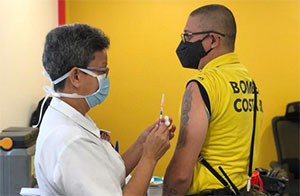 |
| Bombero (Fireman) Being Vaccinated |
FIRST GROUP: The elderly residing in a long-stay center, and those who work in these places, and front-line personnel such as workers of the CCSS, the Ministry of Health, personnel who work in private hospitals, the National Emergency Commission, first responders such as firefighters and health workers. The elderly don`t get much more so than our friend Chepito who turned 120 this year and who is shown getting his Coved-19 vaccination at the right.
Firefighters here are called bomberos and that`s one being vaccinated in the photo right. Also included are Red Cross and security police forces, such as transito, immigration, prisons, municipalities and the Organismo de Investigación Judicial (OIJ - think Costa Rican FBI).
SECOND GROUP: Those aged 58 or over, regardless of whether or not they have any risk factors. Age will be verified by means of the cédula (national identity card) or Dimex (residency card). This is GG`s group.
THIRD GROUP: People between 18 and 58 years old with some risk factor such as hypertensive, diabetic, heart disease, chronic respiratory disease, people with chronic kidney disease, grade III and morbid obesity and cancer patients.
FOURTH GROUP: Officials of the Ministry of Public Education and private educational centers (i.e. teachers, principals, support staff, etc), and those who work in the comprehensive care centers (CAI) and shelters of the Patronato Nacional de la Infancia (PANI), the child welfare agency. Also prisoners and those who work for the 9-1-1 Emergency System.
FIFTH GROUP: Students of health sciences and related technicians in clinical fields of the CCSS; people between 40 and 57 years old without any of the risks previously described, but who carry out work activities where they have contact with other people or have an impact on the productive sector, such as agriculture, construction, customer service, restaurants, domestic workers, among others.
As mentioned above the country is currently receiving 33,150 vials of vaccine per week and, at two doses per person, it would take 300 weeks or six years to vaccinate the entire population. So obviously the success of this program depends on increased availability of this vaccine and others. The announcement by the ministry estimated that Group 2 vaccinations (GG's) would begin "after March". GG says: "Poke me baby, poke me."
Vaccine Passport Coming?
 |
| QR Code Sample |
While the effort on vaccines is now entering a phase of wide distribution, a large number of hi-tech companies are working on how to manage the information that follows testing and inoculations for both Covid and other diseases.
Companies like Apple, Google, IBM and a slew of smaller tech companies are forming partnerships to come up with ways of storing test results, records of inoculations and other pertinent medical info that can be accessed by your smartphone by recognizing a QR Code, a Quick Response Code, those funny looking things that are becoming more and more widespread and common in our lives, like the one to the left.
All of the privacy issues have not been settled but they will be and are high on priorities. The logic follows that instead of having to carry pieces of paper that verify the date of your test or inoculation, you will simply produce your code on your smartphone or even on a card like a credit card. Several companies and technology groups have begun developing smartphone apps or systems for individuals to upload details of their Covid-19 tests and vaccinations, creating digital credentials that could be shown in order to enter concert venues, stadiums, movie theaters, offices, or even countries.
 |
| IBM Digital Health Pass |
Privacy issues are certainly central and essential to any information data bank. IBM`s Digital Health Pass allows companies and venues to customize indicators they would require for entry including Coronavirus tests, temperature checks and vaccination records.
So it`s likely that in the not too distant future this kind of technology will replace current paper trails such as pink slips and yellow slips related to vaccinations and tests. You will, in effect, be required to provide the equivalent of a vaccine passport, particularly where there are known health threats. Looks like we have one more step in digitizing our lives, amigos.
LATE BULLETIN: R-Rate Drops to New Low
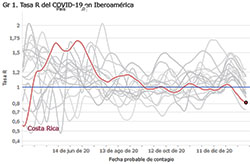 In December, the Chronicles reported that the R-Rate, a measure of the probable reinfection rate or new infections per old had declined to below 100 (0.96) for the first time since early October. Late in January the Health Ministry announced that the most recent figure for the week ending January 22 had dropped to 0.81. Yeah baby! Not to get unrealistically excited as this thing can change quickly if too many people don`t continue to practice caution, but it is encouraging.
In December, the Chronicles reported that the R-Rate, a measure of the probable reinfection rate or new infections per old had declined to below 100 (0.96) for the first time since early October. Late in January the Health Ministry announced that the most recent figure for the week ending January 22 had dropped to 0.81. Yeah baby! Not to get unrealistically excited as this thing can change quickly if too many people don`t continue to practice caution, but it is encouraging.
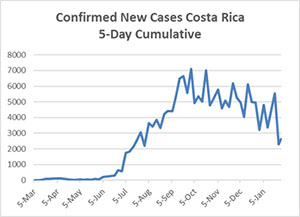 |
| New Covid-19 Cases |
The graph above, left shows the trend, the red line being Costa Rica and all the squiggely lines (that adjective is in the GGC Dictionary) are the other Central American countries. Note the new infections trend to the right, a stat that GG has been following on a daily basis for several months. It also reflects what the R-Rate is telling us.
Looks like our health folks are doing a bang up job especially when the death rate is considered. Costa Rica has averaged the lowest death rate from Covid-19 in Central America, 1.3% with the next nearest being Panama with 1.6% and the highest being Ecuador at 6.0%. Note that Nicaragua has not been included in the data above as it is widely believed that they are fudging the numbers.
Don`t forget to buy your health professional a batido this month (not a beer or martini - they`ve got more work to do) and thank them.
¡Pura Vida!
Travel Quote of the Month

¡A Cachete!
GGC Bookshelf
(skip section)

GGC Publications Group is the parent organization that publishes the Golden Gringo Chronicles as well as a number of books and paraphernalia related to the Chronicles and Costa Rica. The GGC Bookshelf also includes works from a number of other authors that belong to the Quepos-Manuel Antonio Writers Group in which GGC has been a founding member.
Here are the books currently available from our bookshelf:
 |
 |
 |
 |
| Las Esferas - English | Mariposa - English | Mariposa - Español | Small Business Guide |
| Read More | Read More | Leer más aquí | Read More |
 |
 |
 |
 |
| Overcoming Drinking | Making Time Count | Spiritual Love Connection | Murder or Suicide? |
| Read More | Read More | Read More | Read More |
 |
 |
 |
 |
| Getting Around the Capital | Retiring in Costa Rica | World War II True Story | What's the Sleuth Up To? |
| Read More | Read More | Read More | Read More |
|
 |
There's Room for More on the QMA Writers Group Bookshelf Keep Writing Amigos! |
|
| The Chronicles as Narrative | Investigate Living Abroad | ||
| Read More | Read More |
All of the above books are available on Amazon.com and the "Read More" links above will lead you to them. You can find more detail on all of them on our GGC Publications Page.
GGC Products Store
GGC Publications also offers some accessories and paraphernalia related to the Chronicles and with Costa Rican themes, to wit:
T-Shirts:

a. Golden Gringo Chronicles with Logo,
b. Official Golden Gringo with Monkey on Banana Hammock,
c. ¡Quepo en Quepos! ("I Fit In Quepos!") with Photo of Quepos,
d. Wanna Monkey Around? - Come on Down! (shown) with Photo of White Faced Monkey,
e. It's OK to be Slothful with photo of Three-Toed Sloth.
The t-shirts are available in several themes, colors, styles and sizes. See them all HERE.
Coffee Mugs:
a. Golden Gringo, b. Wanna Monkey Around?, c. It's OK to be Slothful
See them all HERE:
What's life without a great cup of Costa Rican coffee? And it tastes even better in a Golden Gringo Chronicles mug!
To see ALL the products available in the Golden Gringo Store go here: GGC Store.
What's-in-a-Word
"Tell me and I forget; teach me and I remember; involve me and I learn"
– Benjamin Franklin
Answer to Que Es Eso?
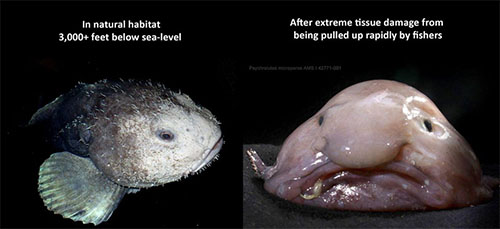 |
It`s a fish (yeah, believe it) called a blobfish (good name, eh?). In its natural habitat the blobfish lives comfortably at depths of 2,000 ft (882 psi) to 4,000 ft (1,747 psi).
Most things, including other fish would be crushed at these depths but the blobfish thrives there, It also looks like a normal fish at these depths (photo far left). But exposed to normal atmospheric pressure above water the fish expands and distorts. It has no bones or skeleton to preserve its structure.
Now that`s a strange fish. The blobfish is found in the deep waters surrounding Australia and New Zealand.
GG has become more understanding about learning a new language as a result of being exposed to one for 12 years. For all of you who wonder why folk from other countries have a bit of trouble with the English language, we offer the following. This is a clever piece put together by an English teacher, who else??
"Homographs are words of like spelling but with more than one meaning. A homograph that is also pronounced differently is a heteronym." "You think English is easy??" "I think a retired English teacher was bored...THIS IS GREAT!"
1) The bandage was "wound" around the "wound".
2) The farm was used to "produce" "produce".
3) The dump was so full that it had to "refuse" more "refuse".
4) We must "polish" the "Polish" furniture".
5) He could "lead" if he would get the "lead" out.
6) The soldier decided to "desert" his dessert in the "desert".
7) Since there is no time like the "present", he thought it was time to "present" the "present".
8) A "bass" was painted on the head of the "bass" drum.
9) When shot at, the "dove" "dove" into the bushes.
10) I did not "object" to the "object".
11) The insurance was "invalid" for the "invalid".
12) There was a "row" among the oarsmen about how to "row".
13) They were too "close" to the door to "close" it.
14) The buck "does" funny things when the "does" are present.
15) A seamstress and a "sewer" fell down into a "sewer" line.
16) To help with planting, the farmer taught his "sow" to "sow".
17) The "wind" was too strong to "wind" the sail.
18) Upon seeing the "tear" in the painting I shed a "tear".
19) I had to "subject" the "subject" to a series of tests.
20) How can I "intimate" this to my most "intimate" friend?
Paradox: any person, thing, or situation exhibiting an apparently contradictory nature.
Let's face it - English is a crazy language. There is no egg in eggplant, nor ham in hamburger (except in Costa Rica); neither apple nor pine in a pineapple. English muffins weren't invented in England or French fries in France. Sweetmeats are candies while sweetbreads, which aren't sweet, are meat. We take English for granted. But if we explore its paradoxes, we find that quicksand can work slowly, boxing rings are square and a guinea pig is neither from Guinea nor is it a pig.
And why is it that writers write but fingers don't fing, grocers don't groce and hammers don't ham? If the plural of tooth is teeth, why isn't the plural of booth, beeth? One goose, 2 geese. So one moose, 2 meese? One index, 2 indices? Doesn't it seem crazy that you can make amends but not one amend? If you have a bunch of odds and ends and get rid of all but one of them, what do you call it?
 |
 |
If teachers taught, why didn't preachers praught? If a vegetarian eats vegetables, what does a humanitarian eat? Sometimes I think all the English speakers should be committed to an asylum for the verbally insane. In what language do people recite at a play and play at a recital? Ship by truck and send cargo by ship? Have noses that run and feet that smell?
How can a slim chance and a fat chance be the same, while a wise man and a wise guy are opposites? You have to marvel at the unique lunacy of a language in which your house can burn up as it burns down, in which you fill in a form by filling it out and in which, an alarm goes off by going on.
English was invented by people, not computers, and it reflects the creativity of the human race, which, of course, is not a race at all. That is why, when the stars are out, they are visible, but when the lights are out, they are invisible.
I think GG needs a quiet vacation now.
¡Pura Vida!
ROMEO Corner
(Retired Old Men Eating Out)
Cuba Libre
Location: Marina Pez Vela, Quepos, main building, second level across the public stadium area from the Runaway Grill.
Hours: 12-10 PM Monday thru Sunday
Parking: Ample in the Marina Parking Garage.
Contacts: Tel: Web: www.cubalibre.cantondequepos,com (They are recently moved from Manuel Antonio hill to the Marina in Quepos. Some website photos are out of date but the menu is still the same)
Reviewing ROMEOS: Alma, Bob N., Gaye C., Glen N., Harry & Ruth, Jorge M., Julia S., Laura G., Mark P.
To Review Our Rating System Go Here: R.O.M.E.O. Rating System
In the past, restaurant Cuba Libre had a magnificent view of the immediate shoreline at Manuel Antonio. When they moved to the Marina they had to give up that view but they didn`t suffer much as they opted for a new magnificent view of the coastline running north which includes the Cordillera Central Mountain Range in the background. Also, below the restaurant bobbing in the water, is a couple of billion dollars of mostly white yachts sparkling in the sun. That`s what you find at Quepos Harbor these days. Overall view, not bad.
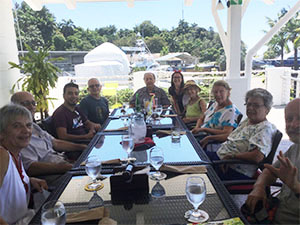 |
| ROMEOs Hard at Work at Cuba Libre |
The interior of the restaurant struck me as being organized to do business while people enjoyed that awesome view and felt inspired by the room`s frankness to kibbitz freely. The dining room consisted of one floor with (my guess) some 15 or so tables, each four-seaters which of course can be conglomerated for bigger parties. We and the staff stuck four together to accommodate our party of 11 people in a matter of seconds with no problem.
The furnishings and decorations in the room are simple and basic. The glass top tables were topped with very little in the way of decoration.
The group composite score for ambiance was 4.7 out of 5.0 sloths maximum.
I had been told earlier by my spies (I have several working at the Marina) that you would see a Cuban flair in the menu as the place is owned by a Cuban national. They were right and, on an earlier visit I enjoyed a pork filet with a sauce that was outstanding. The menu is quite extensive and included several options in each category such as large salads, beef, pork, chicken and seafood, all done in several different ways.
This time I ordered a pasta with vegetables, trying to stay reasonable on my diet. What arrived was a bowl loaded with spaghetti pasta impregnated with gnocchi and containing pieces of broccoli and carrot precooked au-point. The pasta was coated in a pesto like sauce but had a different taste than just pesto (Cuban?). It was delicious and the amount quite filling. I sampled the dessert offering by selecting the brownie with ice cream from the short list of brownie with ice cream, Macadamia nut pie and coconut flan. This was one place where I felt the meal fell a little short as these three "postres" are kind of standard restaurant offerings in this area and not very interesting. The dessert list could stand a little Cuban creativity in that regard..
Other ROMEOs took a variety of main courses including seafood pasta, fish in two ways, 1) as fish fingers and 2) whole broiled, pork, as a sandwich they call the Midnight Sandwich and also a large salad with quinoa.
Some comments about the food: "a bit expensive but the quality of the food was worth every penny"; "wonderful food presentation"; "very good", "thought the sandwich is a bit skimpy on the pork", "skimpy on the salad dressing"
All this resulted in a composite rating for food quality of 4.0/5.0. |
 |
|---|---|
| $$$.9 | |
Value Index= 115 |
We were served by a young man named Jaxon who was polite and attentive, Our composite score for service came in at 4.7/5.0. That in turn resulted in a a composite average rating for 4.4/5.0.
I think GG probably had (as usual) a broader sampling of the menu (nice way of saying I eat too much): a ginger-ale michalada (a tall, salted glass, half filled with lemone juice into which the ginger ale is slowly worked by the drinker), the pasta pesto with vegetables and a brownie with ice cream for dessert (it was good but I was looking for something Cuban). The total came to ₡14,100 or about $23.50. Not cheap but not really abnormal for such a meal in this vicinity.
The ROMEOs composite score for cost came in at 3.9/5 (recall that 1 is considered a bargain and 5 very expensive for cost in this rating system). That resulted in an average rating for ambiance, food quality and service of 4.5/5.0 and a Value Index of 4.5/3.9x100=115, putting Cuba Libre right in the middle of the restaurants we`ve reviewed in the area for Value.
The ROMEO`s can confirm that Cuba Libre is another attractive choice for a good meal in the Quepos area at a reasonable price.
¡Solo Bueno!
Opt-In Here to Receive Your Free Monthly Copy Of
The Golden Gringo Chronicles
The Golden Gringo Chronicles is a free newsletter that is non-political, non-commercial and, hopefully, informative and entertaining. By signing up you will receive an email each month around the first of the month giving you the links to the latest edition as well as to each individual feature and departmental section.
CLICK HERE TO SIGN-UP FOR THE GOLDEN GRINGO CHRONICLES
or Email me at gg@goldengringo.com, or use our Website at: www.goldengringo.com
Bob Normand, Editor & The Golden Gringo
Pura Vida!
To Contact GGC World Headquarters (yuk, yuk) to makecomments, suggest topics or criticize my bad jokes, just send an email to: gg@goldengringo.com.
Be pithy but kind; I'm sensitive.
Unsubscribe from Golden Gringo Chronicles

 Would you believe the Golden Gringo Chronicles has reached it's 150th monthly birthday.
Would you believe the Golden Gringo Chronicles has reached it's 150th monthly birthday. 
